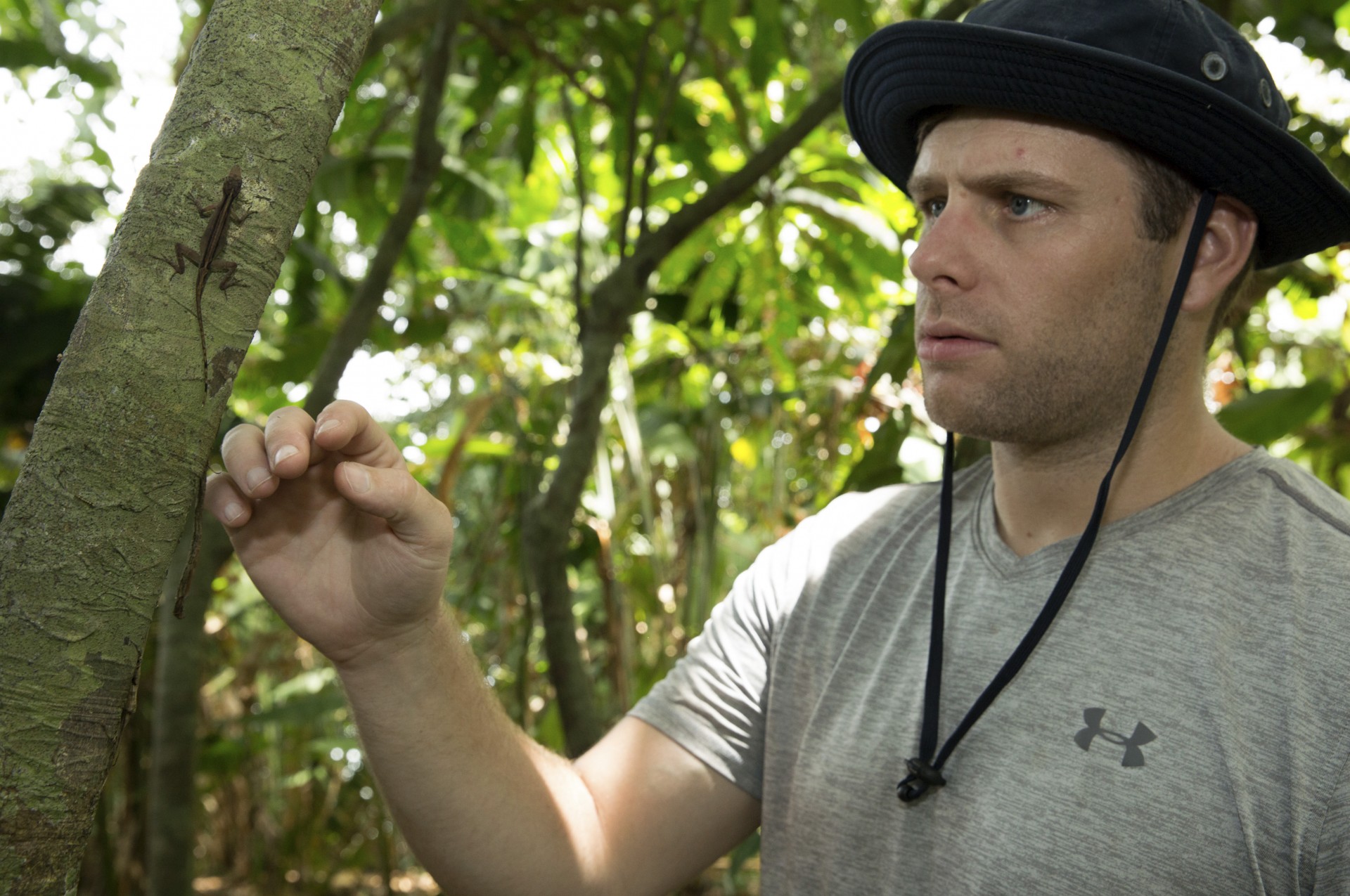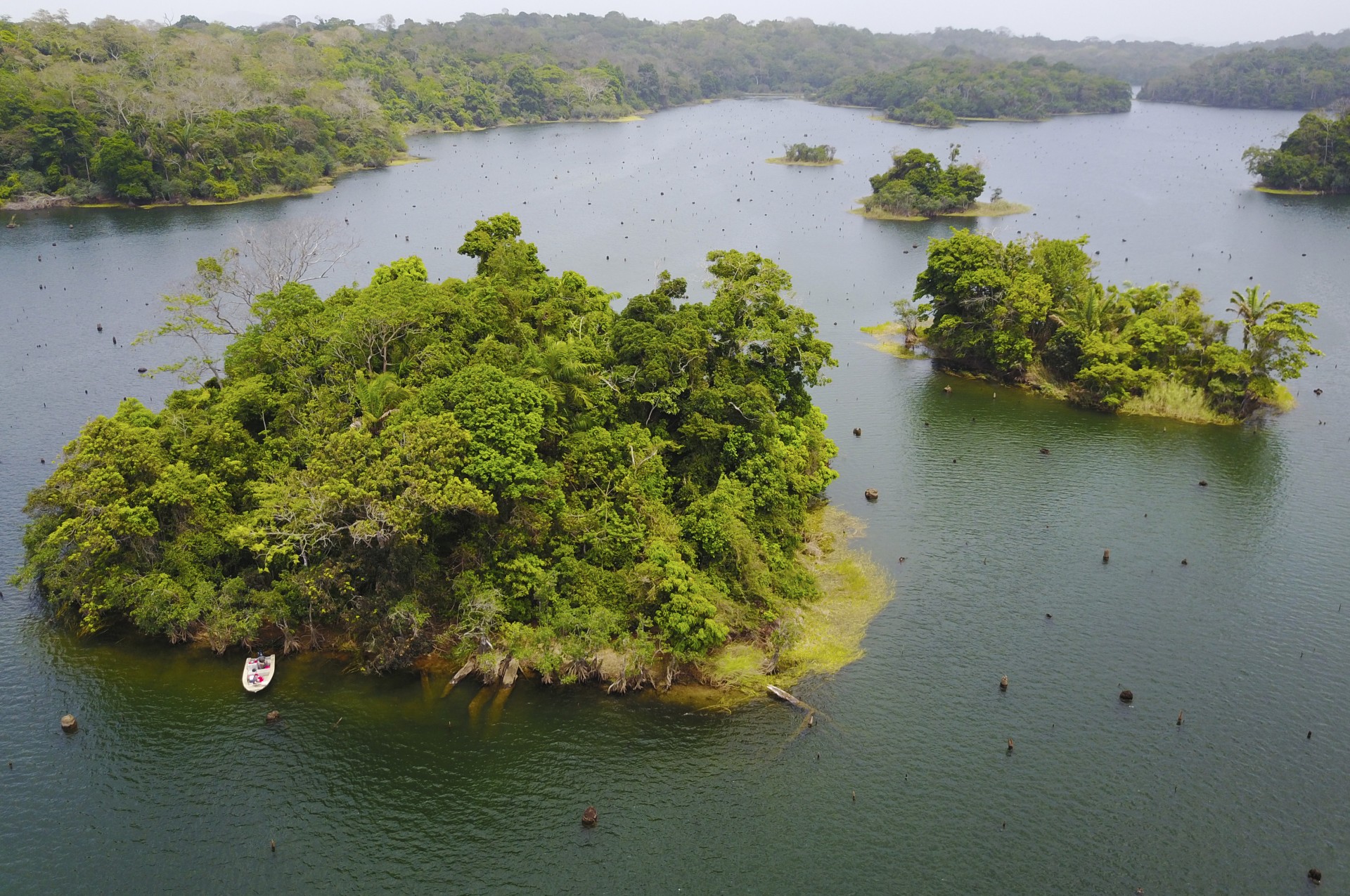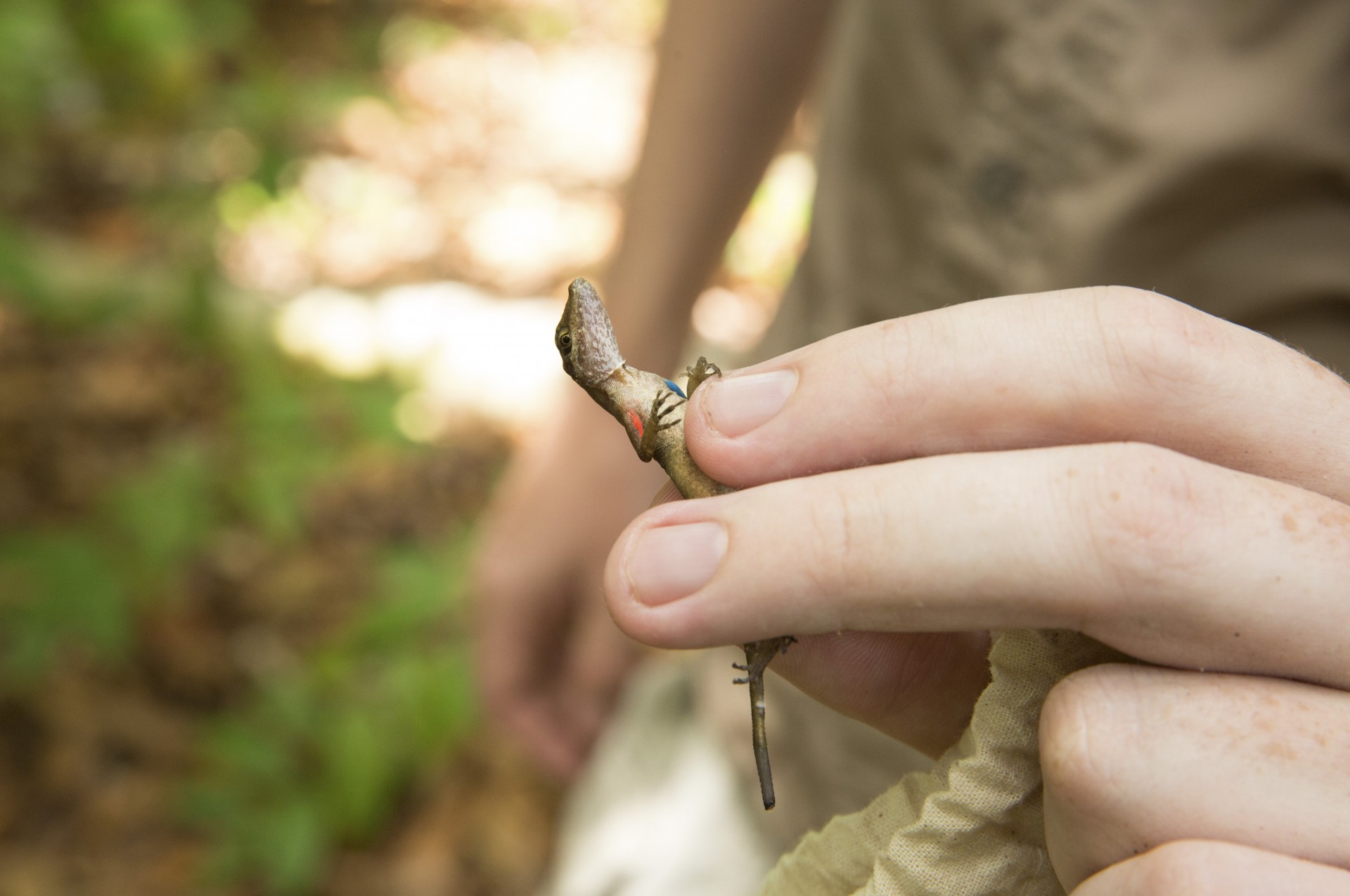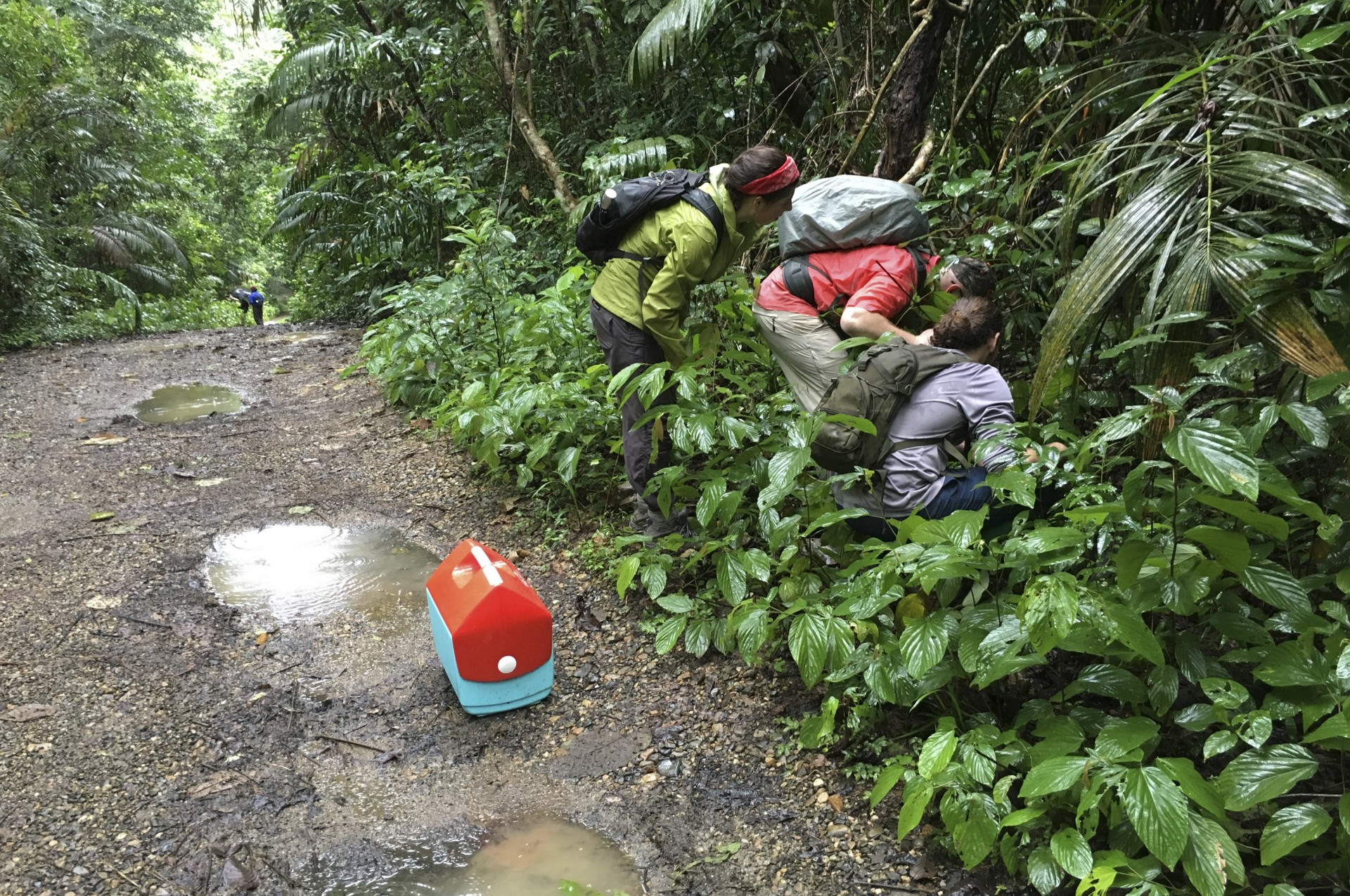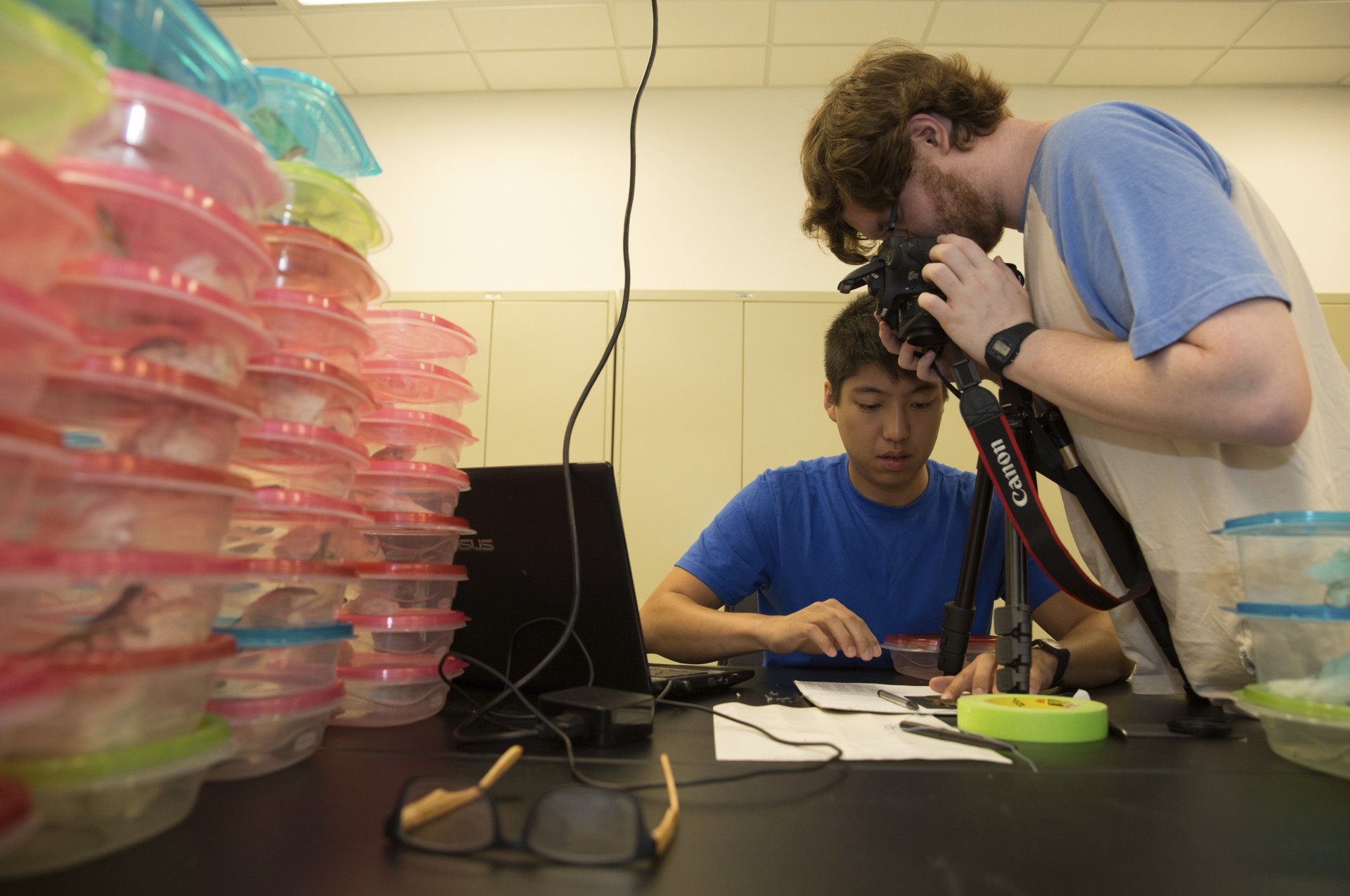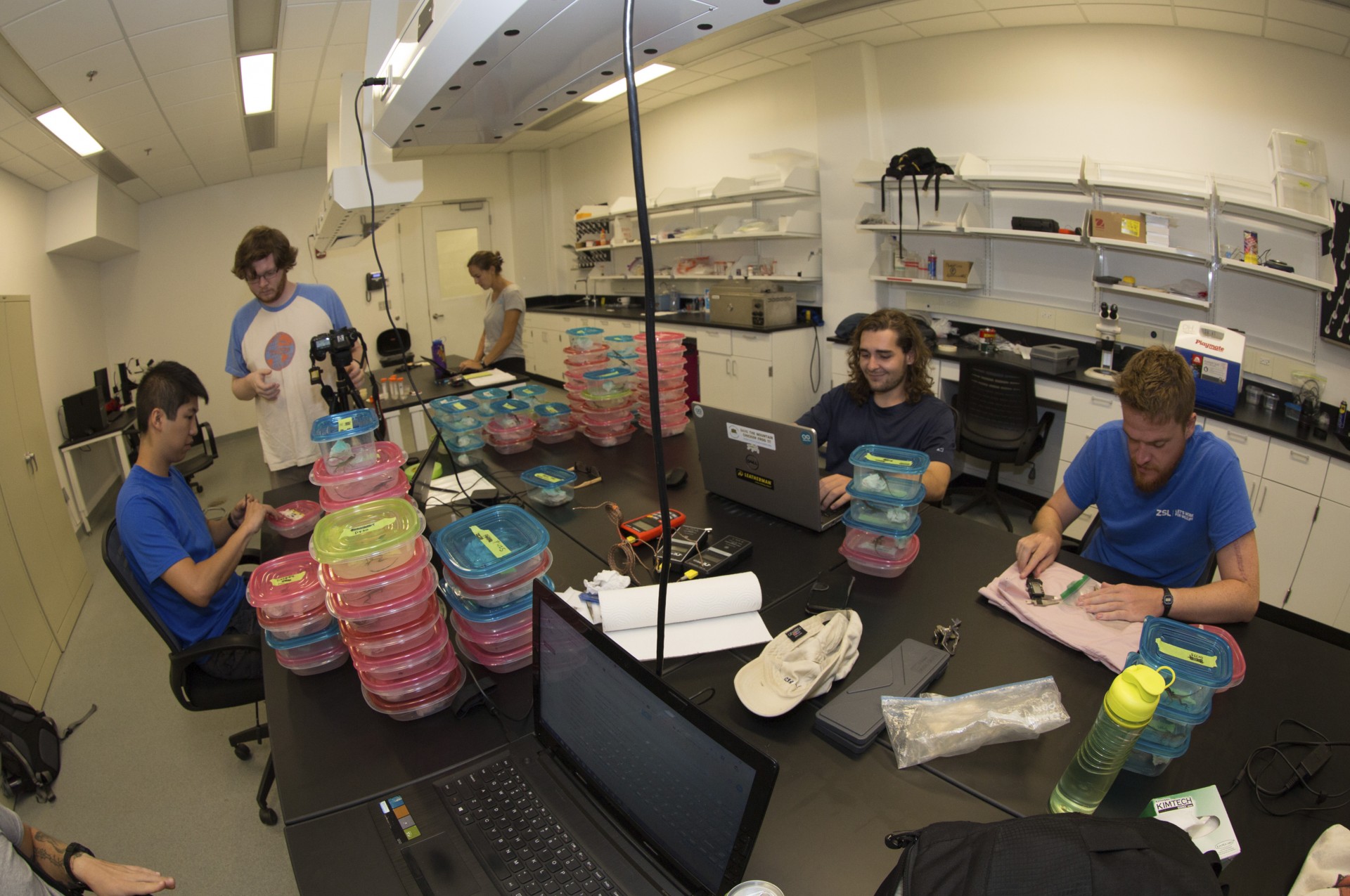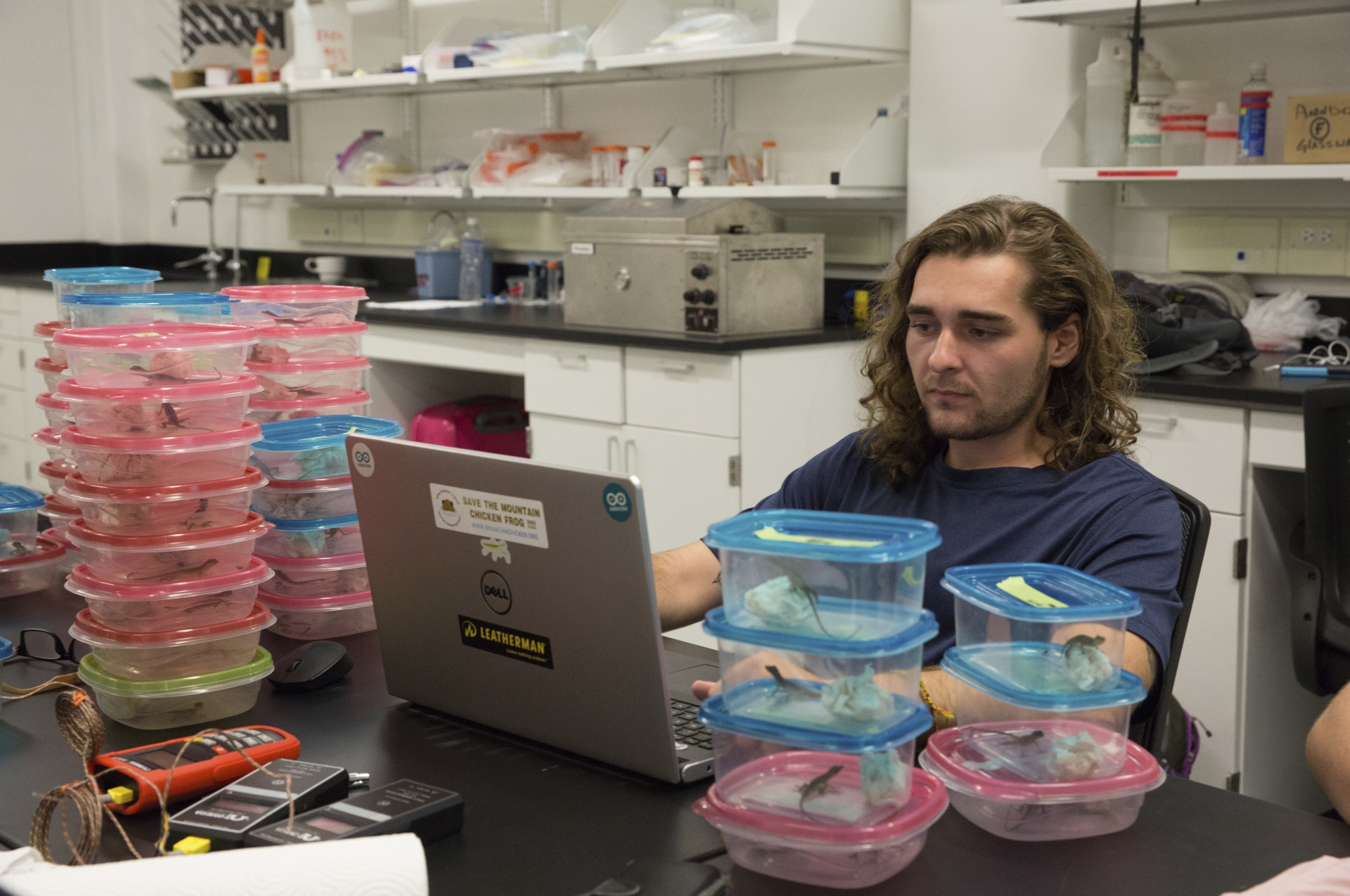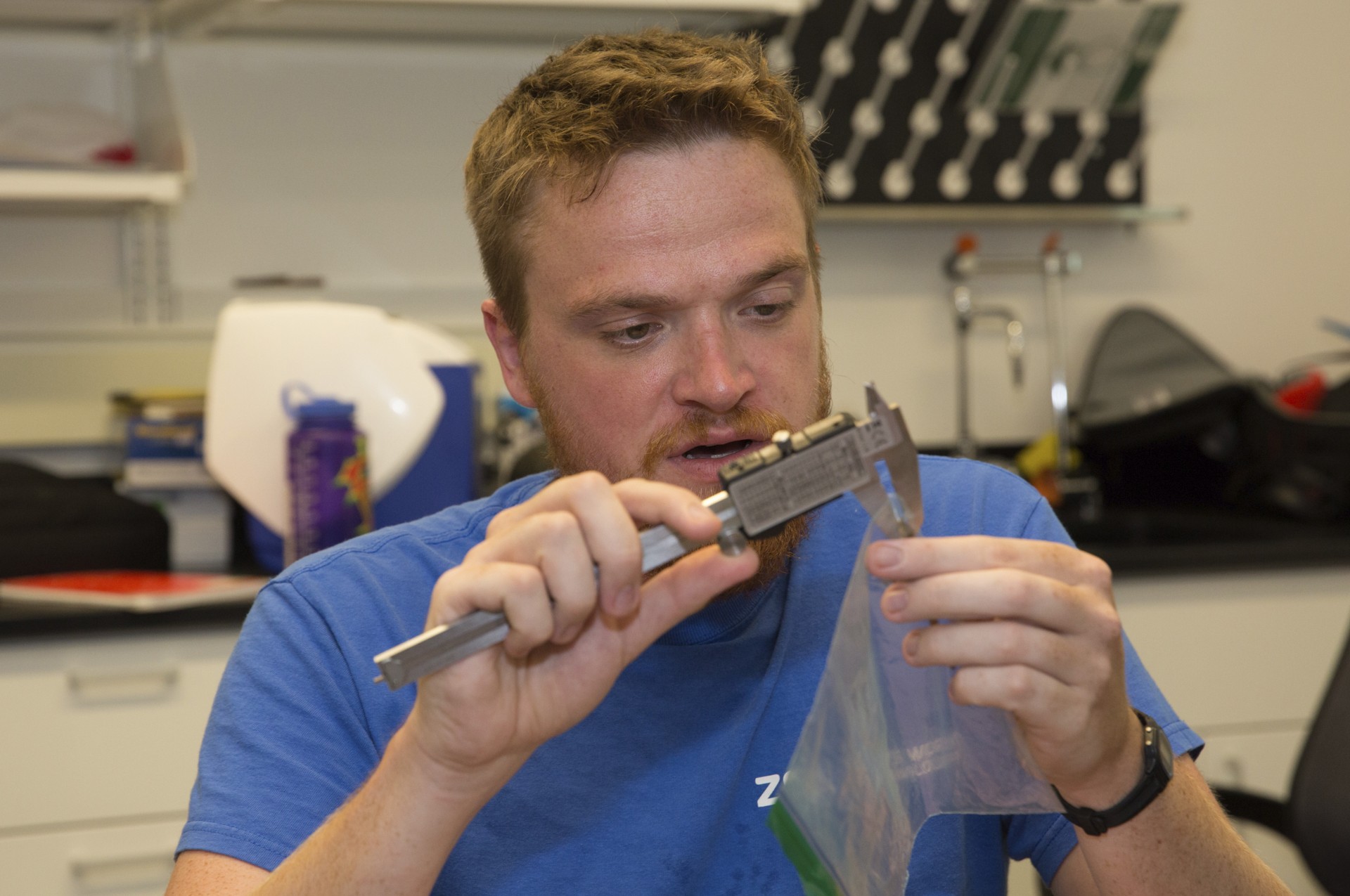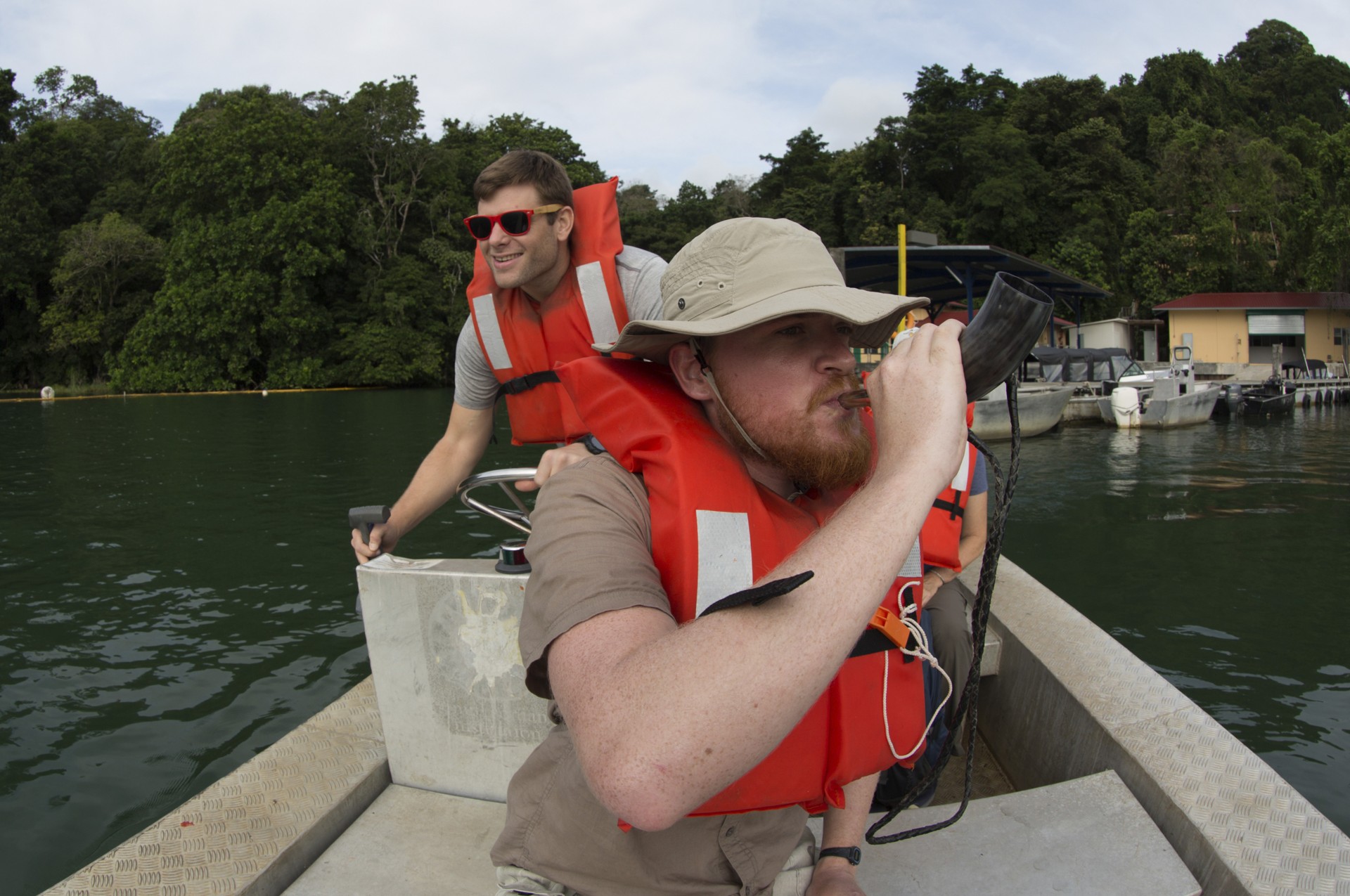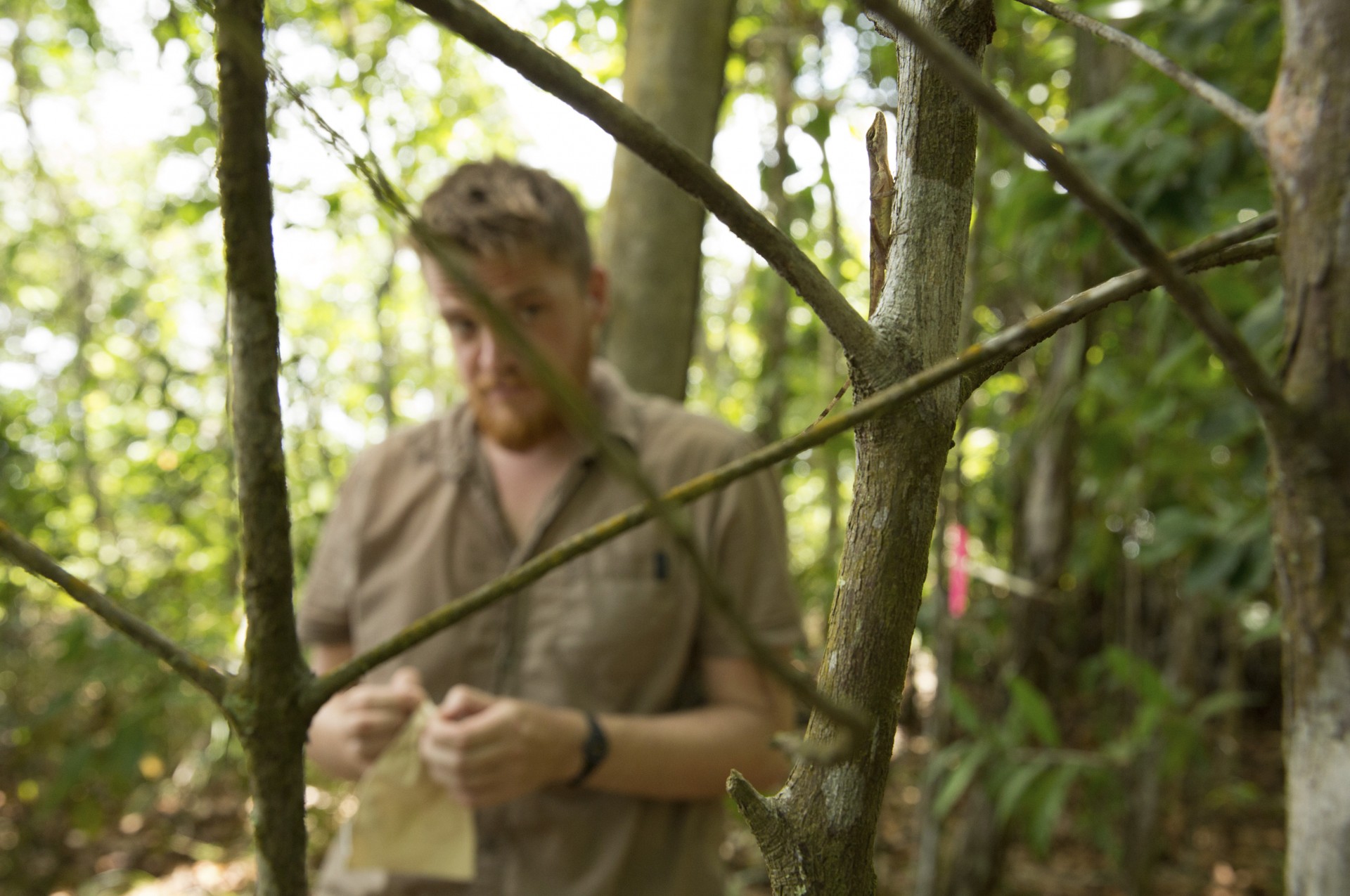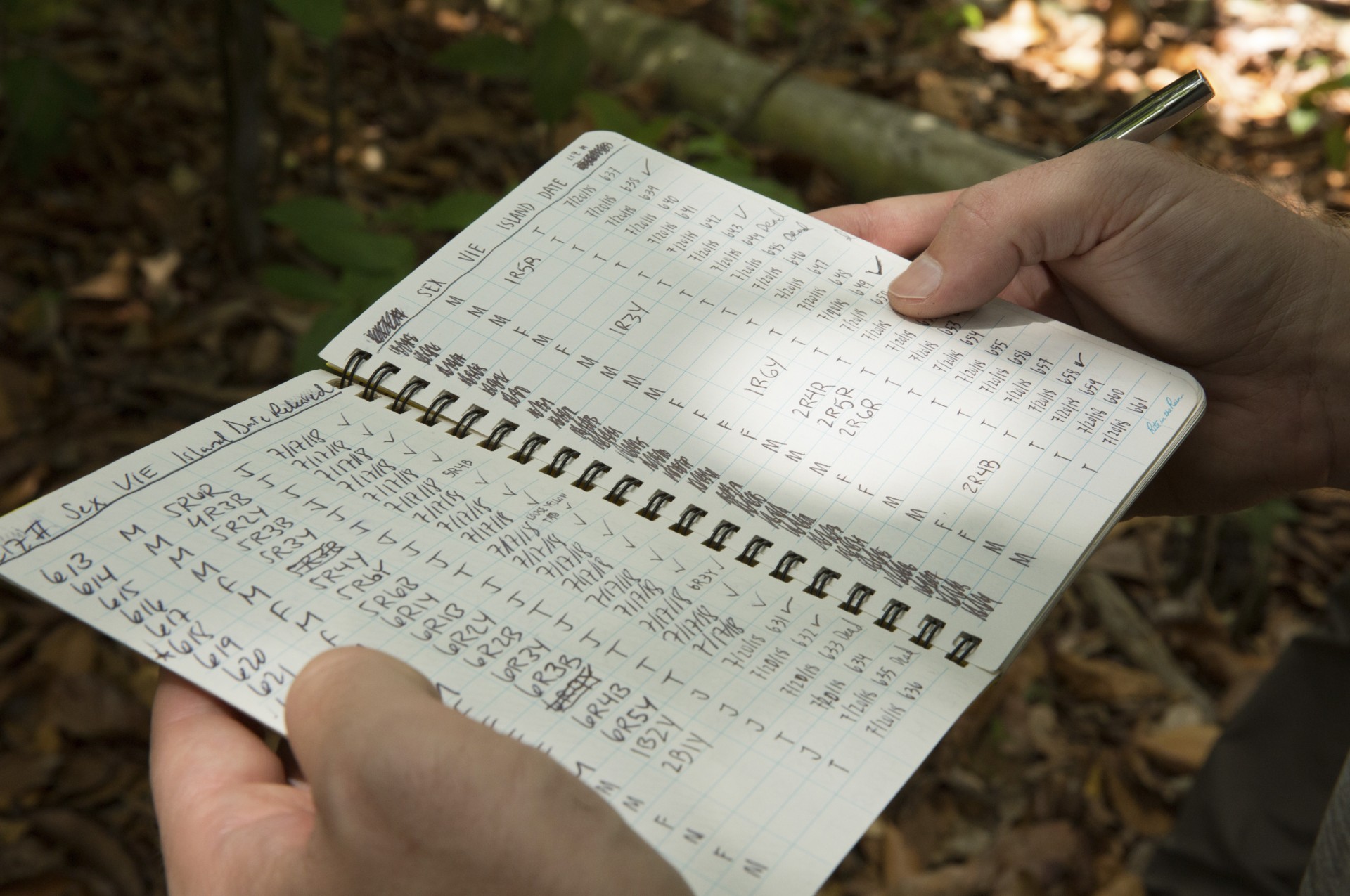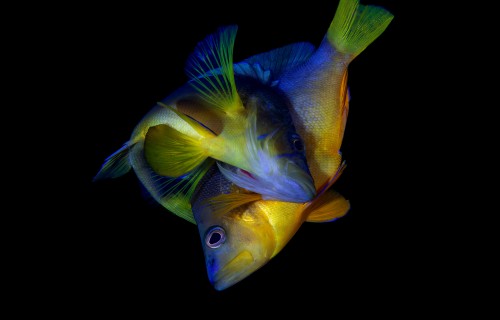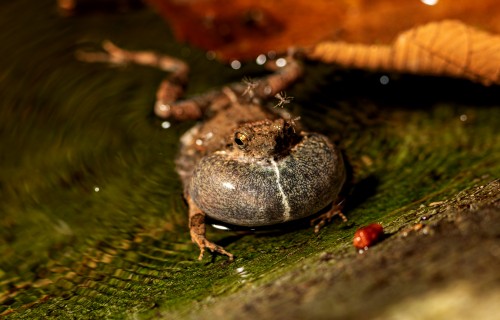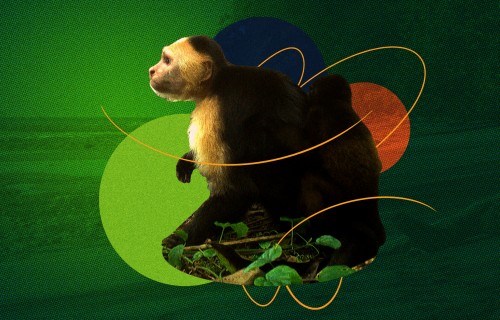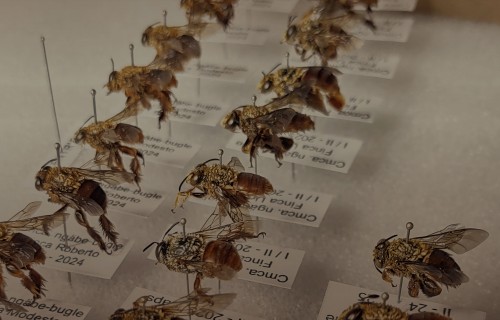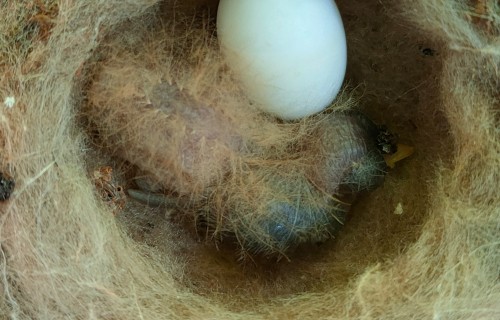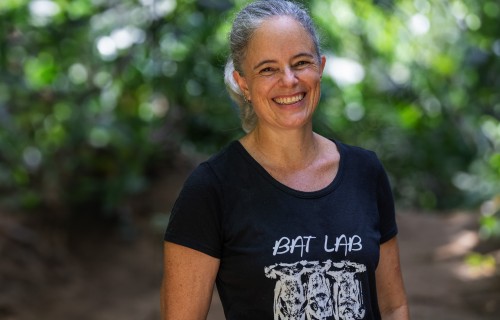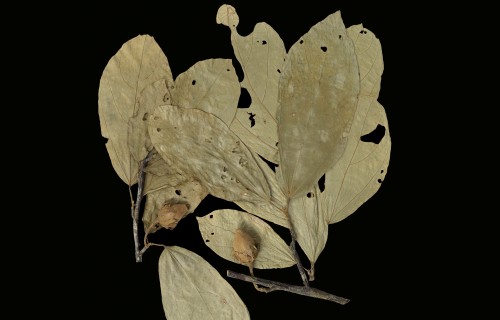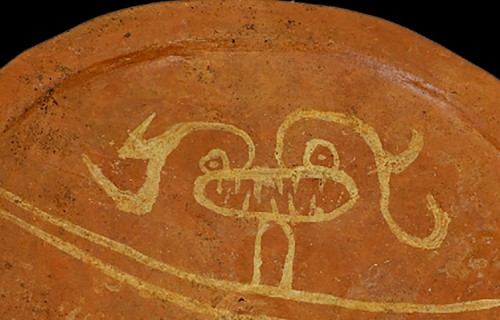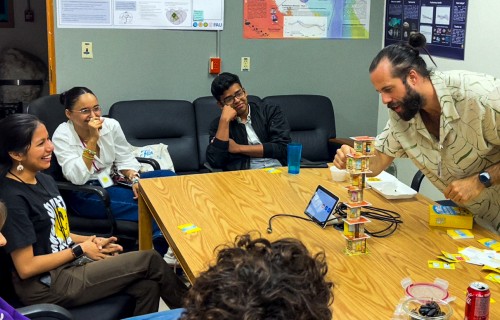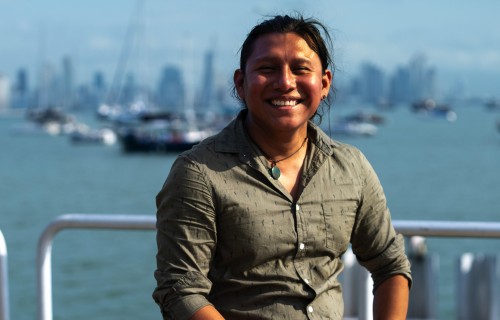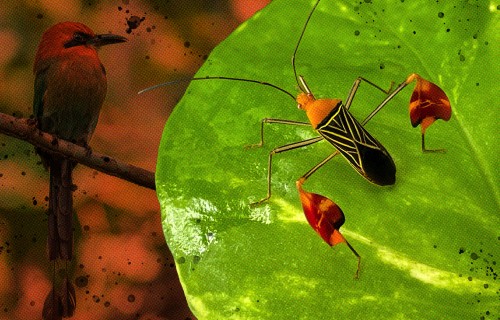A comparison of colorful hamlets
from the Caribbean challenges ideas
about how species arise
Darwin
double time
Can Evolution Rescue Lizards
From Climate Change?
Lake Gatún, Panamá
Some organisms adapt more quickly than others and may have a better chance to survive climate change. 2018 Tupper Fellow, Mike Logan, follows lizards as they adapt to islands.
If you asked Mike Logan’s high school teachers whether they thought he would ever lead an international team of scientists in the first major experiment to show the genetic basis for animal adaptation to climate change in the wild, they probably would have laughed in your face. Mike, chosen to receive STRI’s coveted three-year Tupper post-doctoral fellowship in 2018, managed to graduate from high school, but he thinks his teachers just wanted to get rid of a disruptive student who made their lives miserable.
Fortunately, the roots of his success go back further. One day, his father brought home a crazy creature that looked like a giant tadpole wearing a lacy collar. Mike watched it with fascination as it swished through the water in his aquarium tank. But when the family returned from a short vacation, the animal was nowhere to be found. Only on closer inspection did they realize it had transformed into a salamander and was now standing upside down on the inside cover of the tank. Mike’s mind was blown.
Always an avid reader, Mike found out all he could about how tiger salamanders transition from breathing with feathery gills on the outside of their necks to breathing with lungs on the inside of their bodies when they move from water to land.
After high school, he spent many months in dead-end jobs. Eventually, Mike convinced his skeptical parents to help him foot the bill for community college. He still remembers the warm spring day when, after learning for the first time in his introductory biology class about Darwin’s theory of evolution by natural selection, he walked out to the parking lot and saw butterflies and bees pollinating flowers in the grass and realized that the evidence for evolutionary adaptation was everywhere. The next day, he ran to the local book store and purchased a copy of Darwin’s Origin of Species. Mike read the book in a week and upon putting it down, realized that he had found his calling in life.
At the end of the semester, when Mike handed his report card to his mother, she cried when she saw his straight A’s.
After a post-doctoral stint with lizard evolution expert, Jonathan Losos, at Harvard University and a U.S. National Science Foundation postdoctoral position with a physiological ecologist, Susana Clusella-Trullas at Stellenbosch University in South Africa, Mike booked a 5 hour flight south to Panama, where thousands of different animals, plants and insects engage in a constant game of survival in one of the most complex ecosystems on the planet—an ecosystem that may now be threatened by climate change. He began to design his current research project as a Biodiversity Genomics Fellow hosted by STRI academic dean, Owen McMillan.
Because people keep burning gas and oil, our climate keeps warming. The amount of carbon dioxide we’re putting into the atmosphere seals in the heat and this greenhouse effect creates conditions that have not been experienced on Earth for almost a million years. Will this mean mass extinctions or will animals be able to cope? Despite the unprecedented changes, some animals may adapt quickly. Mike thinks that some species may be able to transform fast enough to keep up.
His easy laugh warms the cool, fluorescent-lighted ambience of STRI’s lab in Gamboa, Panama. Like clockwork, his team quickly takes a series of measurements on lizards called slender anoles (Anolis apletophallus) that they collected along nearby Pipeline Road in Soberania National Park.
Madeline DuBois, project intern and undergraduate from Northeastern University, Christian Cox, project co-PI and Assistant Professor at Georgia Southern University, and Zachariah Degon, project intern and recent graduate from Georgia Southern University, search in the foliage in Panama's Soberania National Park for lizards that will be moved to islands with different environments to see how they might adapt to climate change. All collecting is done with permission from Panama’s Ministry of the Environment.
After this methodical examination, the group will give each lizard a unique tag and release them on islands in Gatún Lake, the 21 mile-long reservoir created by flooding the Chagres river valley in 1914 to create the main waterway for the Panama Canal. The islands vary in size from small, rocky outcrops to entire mountaintops: each is a uniquely different habitat. Grassy or shrubby islands offer no protection from the hot midday sun, whereas looming tropical trees provide cool, moist shade on larger islands.
By studying how the lizard populations change on these islands, Mike hopes to see evolution in action. Because they are cold-blooded, lizards directly experience the temperature of their surroundings. These small lizards are flexible super-invaders, traveling from one place to another, adapting to new conditions and reproducing quickly. Also, their genetics are well understood. Mike hopes it will be possible to see changes in the DNA of the offspring of individuals that survive tough conditions.
“I like to think of these animals as astronauts going to Mars,” he says. “We’re moving them from their home habitats to completely new surroundings. It may be hard for some of them to adapt, but their reactions will teach us a huge amount about how living creatures might cope with the drastic changes in climate that we face here on Earth.”
One student measures a lizard’s length from its snout to its cloaca, a single opening where both liquid and solid waste from digested food comes out, with a very accurate caliper tool. Another weighs each animal to the microgram on the flat metal plate of a precision balance. A third checks to see if they show signs of ticks or other blood parasites on the outside of their bodies and for the telltale signs of parasitic worms moving in sinusoidal curves just under the skin. Each lizard is also run through a battery of physiological tests to determine how their metabolism or running ability changes with an increase in temperature.
The next morning before dawn, the lizards are on their journey, snuggled into individually numbered cloth bags inside a blue plastic cooler.
Dan Nicholson, who is supervised by Mike as part of his doctoral work at Queen Mary University in London and the Zoological Society of London, loads the cooler in the project truck for the trip down to the dock in Gamboa, where he puts it on the Jacana—the boat that ferries scientists out to STRI’s research station on Barro Colorado Island in the Panama Canal. Once on Barro Colorado, the biggest island in the lake, he and Mike get into a Boston Whaler and head out for the smaller islands where they will release the lizards.
According to a lab tradition, Dan blows several long blasts on a ram’s horn as they leave the pier.
They navigate around the stumps—hardwood trees still standing more than 100 years after the Chagres Valley was flooded to make the lake and the Canal. Only about five minutes out, rounding the tip of Fairchild Point, the motor stalls. No amount of coaxing convinces it to start again.
After a desperate cell phone call from Mike, the Barro Colorado boat master sends out a mechanic in another boat. He throws them a line for the tow back in. Now there is some nail biting about the health of the lizards, who have been in the bags for a couple of hours. But before long, they are assigned another boat and are on their way again.
The bags in the cooler pad the lizards as the boat bounces over white caps on the lake. Ever wary of killer bees, wasps nests and snakes, they motor up to the side of an island, pushing through branches. Dan reads off the numbers on the bags as they release dozens of lizards on the island. A lizard poses on a thin branch before leaping off into the dry leaf litter and disappearing from sight. It is definitely hotter here than on Pipeline Road where they were caught.
Over the coming months the team will come back to this island (and others) many times to recapture the surviving lizards. In this way they can determine which individuals survived the longest and therefore how natural selection is operating. In the second year, when most of the initial lizards will be dead and only their offspring remain, Mike’s team will capture, measure, and mark this new generation to track changes that may be due to evolution. They will also use new genetic techniques that make it easy to reveal changes in the genetic code of lizards who have lived on different islands, subjected to different temperatures.
Mike hopes to find out if there are certain parts of the code that change in the offspring of lizards that survive tough conditions. He plans to match up these genetic changes with other, more easily observable changes in the lizards’ physical appearance and physiology. If certain parts of the code change in most of the lizards subjected to warmer environments, this will be an early and important clue in the struggle to understand what the future holds for tropical species as climate change becomes more severe.
“The ancestors of these lizards have survived abrupt and nearly catastrophic changes in their environments in the distant past, long before human beings began altering the global climate in significant ways,” Mike says. “What we want to know is: can they pull off the encore? Can they evolve fast enough to deal with the break-neck pace of human-caused climate change?”
People working with Mike:
Dan Nicholson, Queen Mary University of London and Zoological Society of London
Christian Cox, Assistant professor at Georgia Southern University
Albert Chung, masters student at Georgia Southern University
John David Curlis, PhD student University of Michigan
Zachariah Degon, undergraduate student, Georgia Southern University
Quinton Taylor, STRI intern and undergrad, Georgia Southern University
Lauren Neel, ASU/USAID graduate student, Arizona State University
Madeline DuBois, intern, Northeastern University

